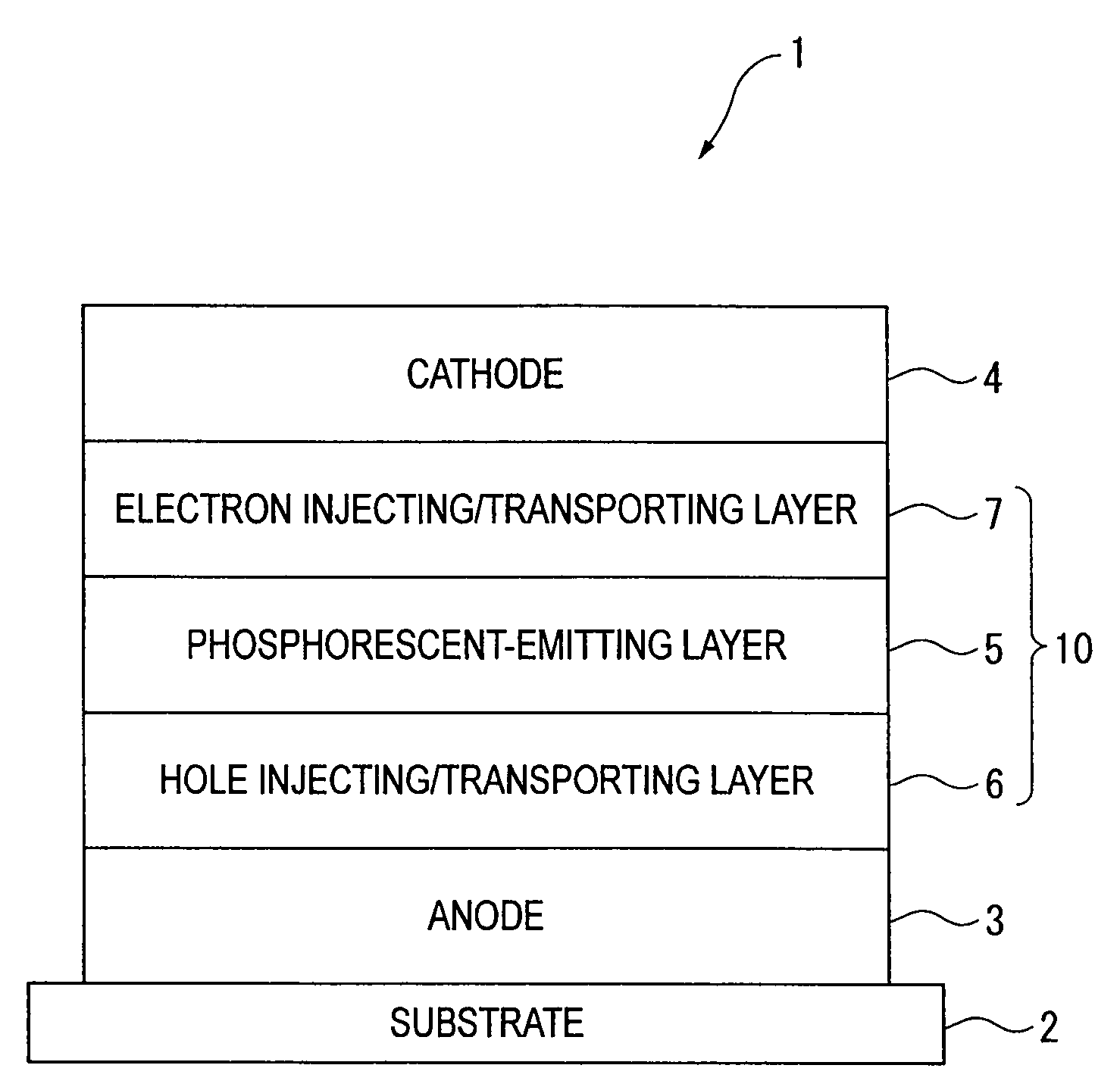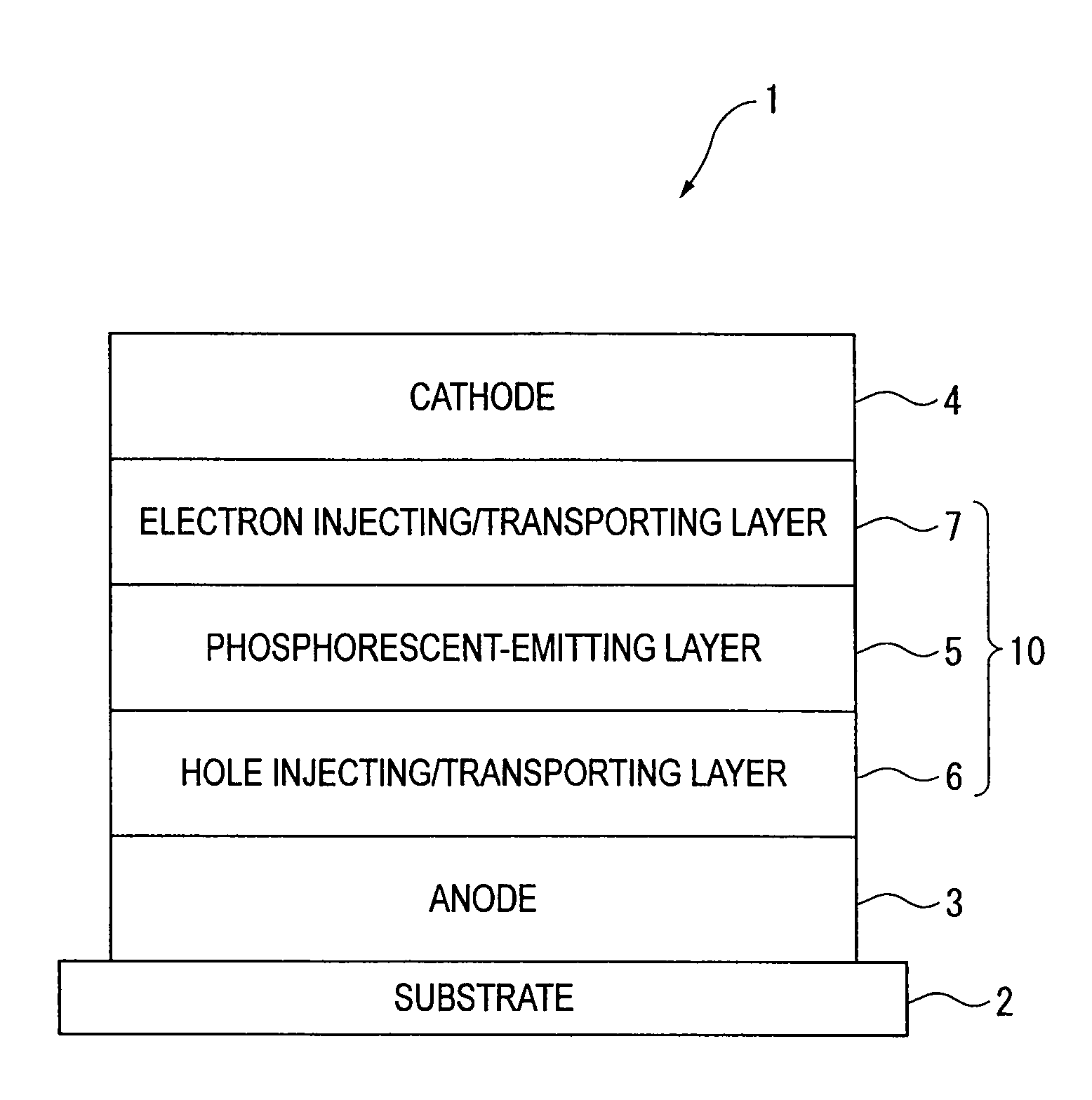Organic electroluminescence device and material for organic electroluminescence device
a technology of electroluminescence device and organic electroluminescence, which is applied in the direction of luminescent composition, discharge tube/lamp details, luminescent screen, etc., can solve the problems of insufficient practical application of improved luminous efficiency and lifetime, considerable degradation of molecules, and short lifetime of organic electroluminescent device, etc., to achieve long lifetime, high efficiency, and high efficiency
- Summary
- Abstract
- Description
- Claims
- Application Information
AI Technical Summary
Benefits of technology
Problems solved by technology
Method used
Image
Examples
synthesis example
[0245]Compounds according to the present invention can be synthesized by Suzuki-Miyaura cross coupling reaction.
synthesis example 1
Synthesis of Compound A1
[0246]Under an argon gas atmosphere, 3.00 g (10.5 mmol) of 2,6-dibromonaphthalene, 8.24 g (22.0 mmol) of 5-(phenanthrene-9-yl) biphenyl-3-ylboronic acid, 0.61 g (0.52 mmol) of tetrakis(triphenylphosphine)palladium(0), 200 mL of toluene, 50 mL of dimethoxyethane and 32 mL of 2M sodium carbonate solution were mixed, and stirred for 10 hours at 90 degrees C. Subsequently, the reaction mixture was warmed up to room temperature, added with water and stirred for 1 hour. After the solid precipitated during the reaction was separated by filtration, the obtained solid was cleansed with water, methanol, dimethoxyethane and toluene in this order. By dissolving the obtained solid in toluene and refining the solution by silica-gel column chromatography, 3.6 g of the compound A1 was obtained at an yield of 43%.
[0247]Mass-spectrum analysis consequently showed that m / e was equal to 800 while a calculated molecular weight was 800.34.
synthesis example 2
Synthesis of Compound A4
[0248]Under an argon gas atmosphere, 5.00 g (7.80 mmol) of 1,3-bis(3-bromo-5-(naphthalene-2-yl)phenyl)benzene, 3.90 g (16.4 mmol) of 9-phenanthreneboronic acid, 0.45 g (0.39 mmol) of tetrakis(triphenylphosphine) palladium(0), 100 mL of toluene, 50 mL of dimethoxyethane and 25 mL of 2M sodium carbonate solution were mixed, and stirred for 10 hours at 90 degrees C. Subsequently, the reaction mixture was warmed up to room temperature, added with water and stirred for 1 hour. After the solid precipitated during the reaction was separated by filtration, the obtained solid was cleansed with water, methanol, dimethoxyethane and toluene in this order. By dissolving the obtained solid in toluene and refining the solution by silica-gel column chromatography, 2.9 g of the compound A4 was obtained at an yield of 44%.
[0249]Mass-spectrum analysis consequently showed that m / e was equal to 834 while a calculated molecular weight was 834.34.
PUM
 Login to View More
Login to View More Abstract
Description
Claims
Application Information
 Login to View More
Login to View More - R&D
- Intellectual Property
- Life Sciences
- Materials
- Tech Scout
- Unparalleled Data Quality
- Higher Quality Content
- 60% Fewer Hallucinations
Browse by: Latest US Patents, China's latest patents, Technical Efficacy Thesaurus, Application Domain, Technology Topic, Popular Technical Reports.
© 2025 PatSnap. All rights reserved.Legal|Privacy policy|Modern Slavery Act Transparency Statement|Sitemap|About US| Contact US: help@patsnap.com



